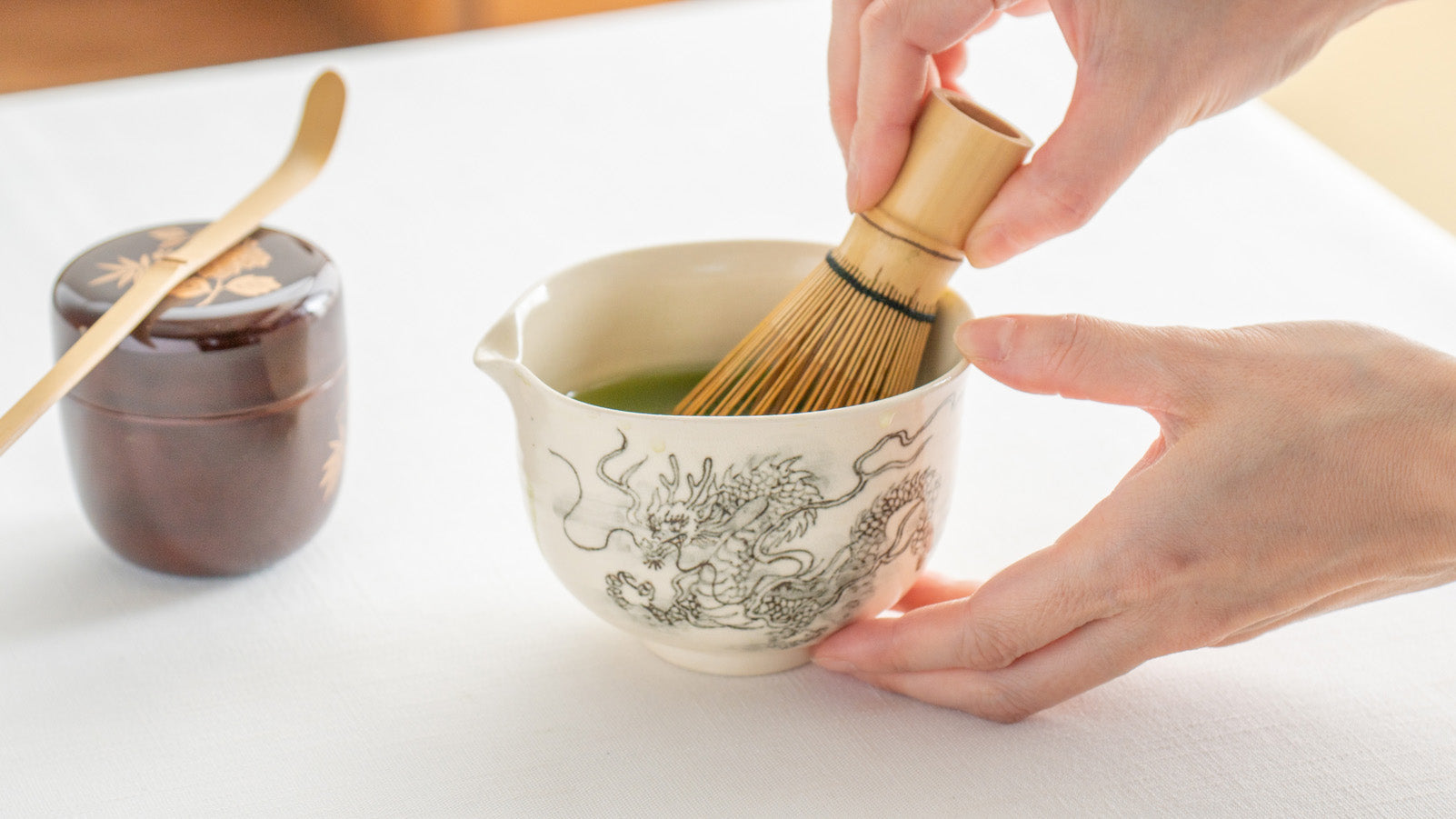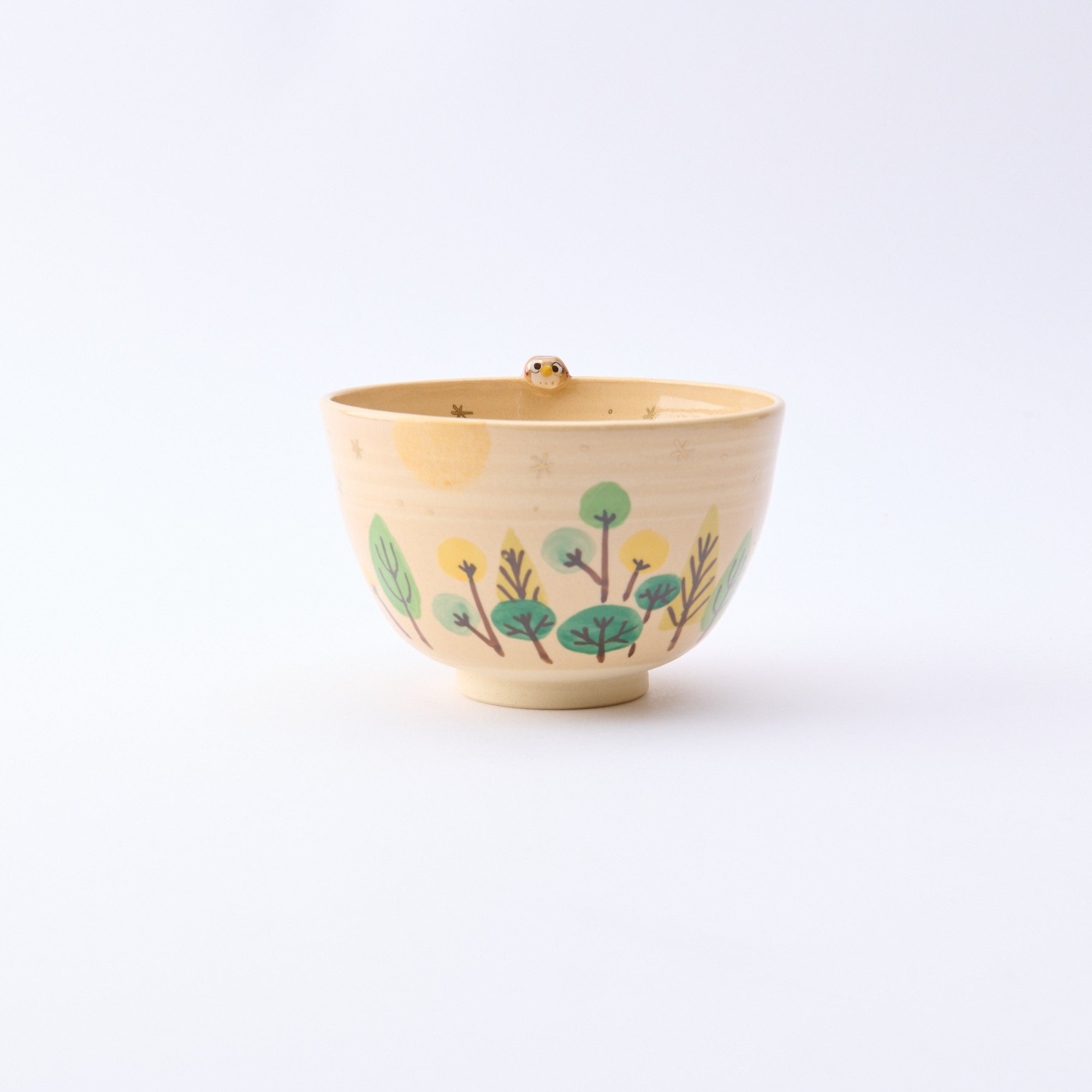
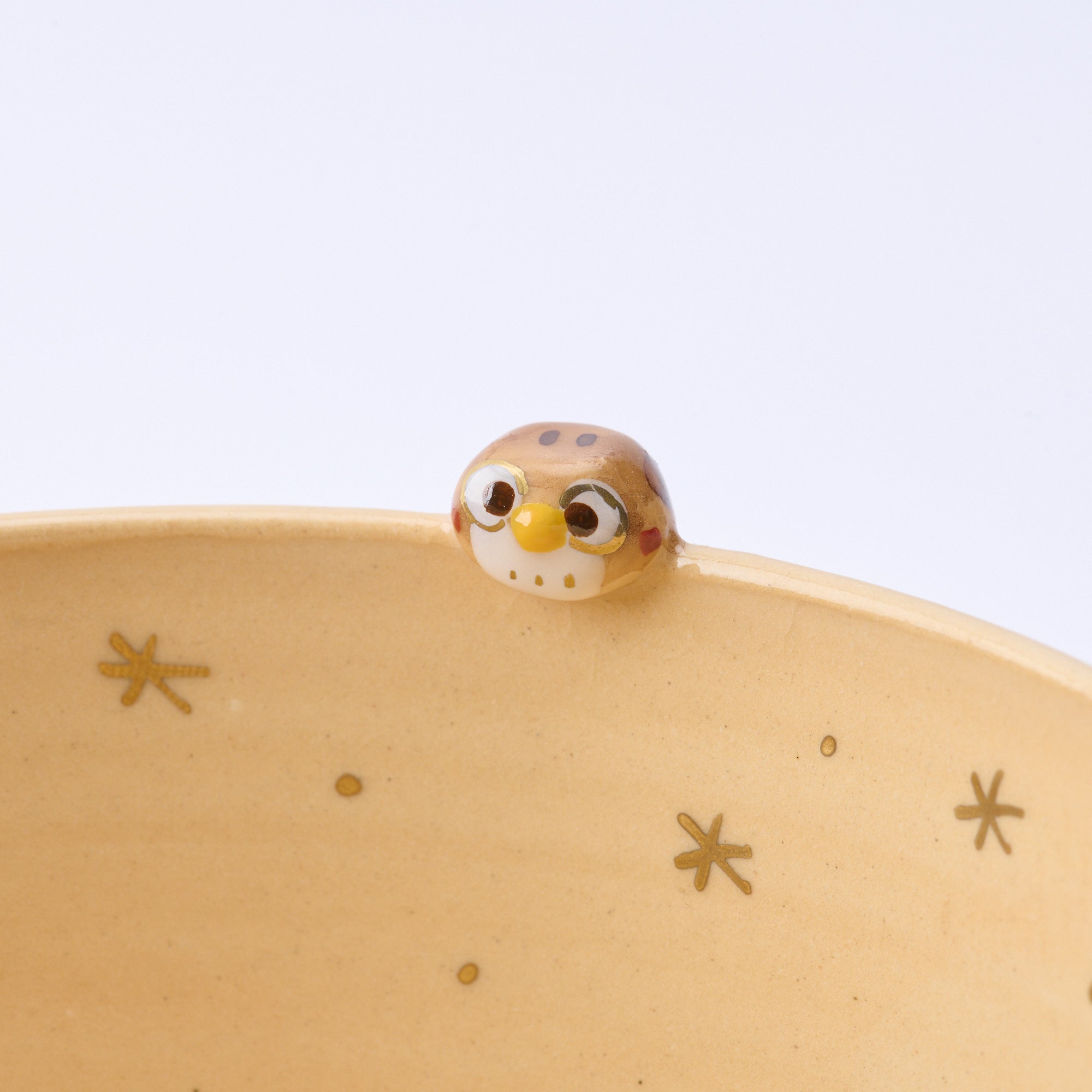
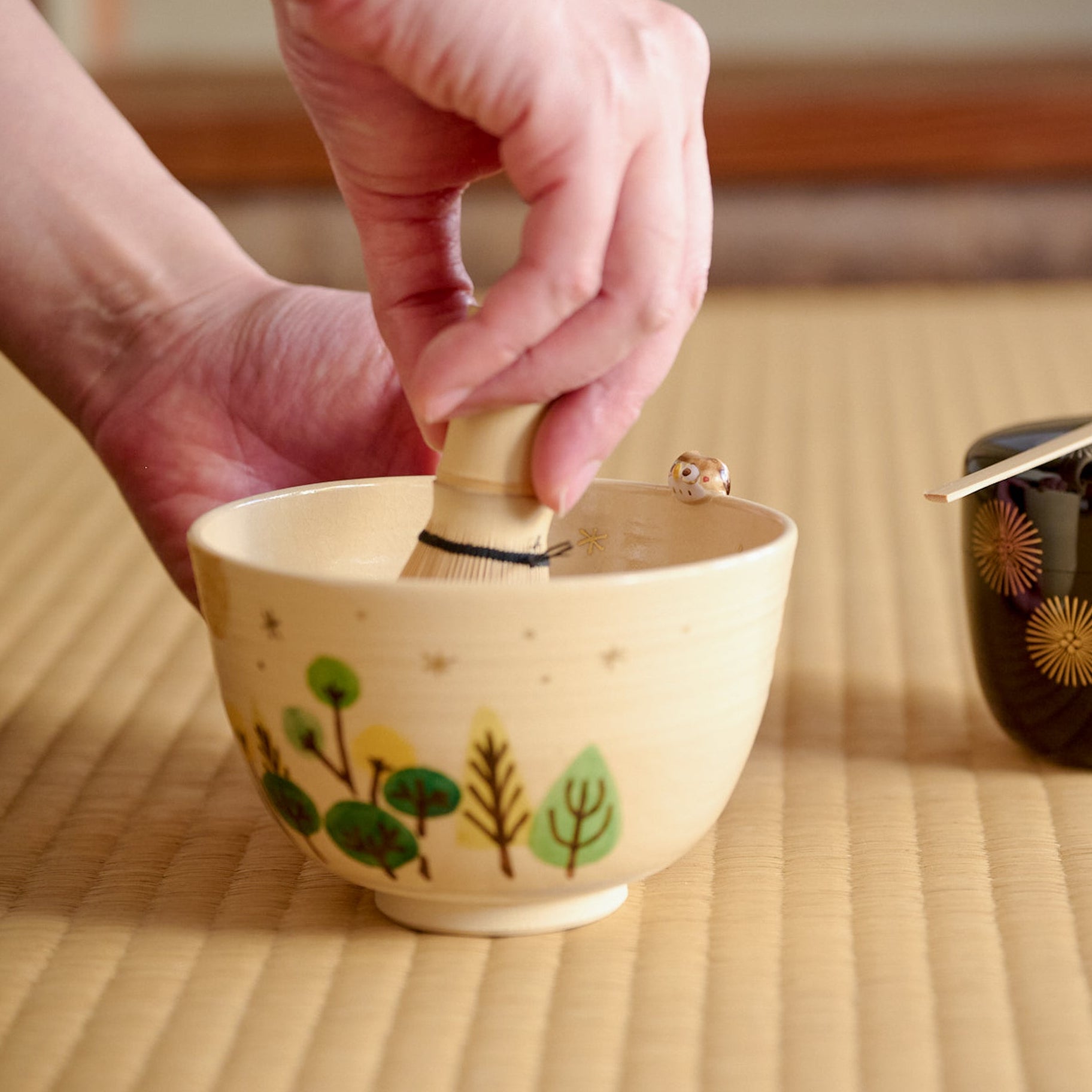
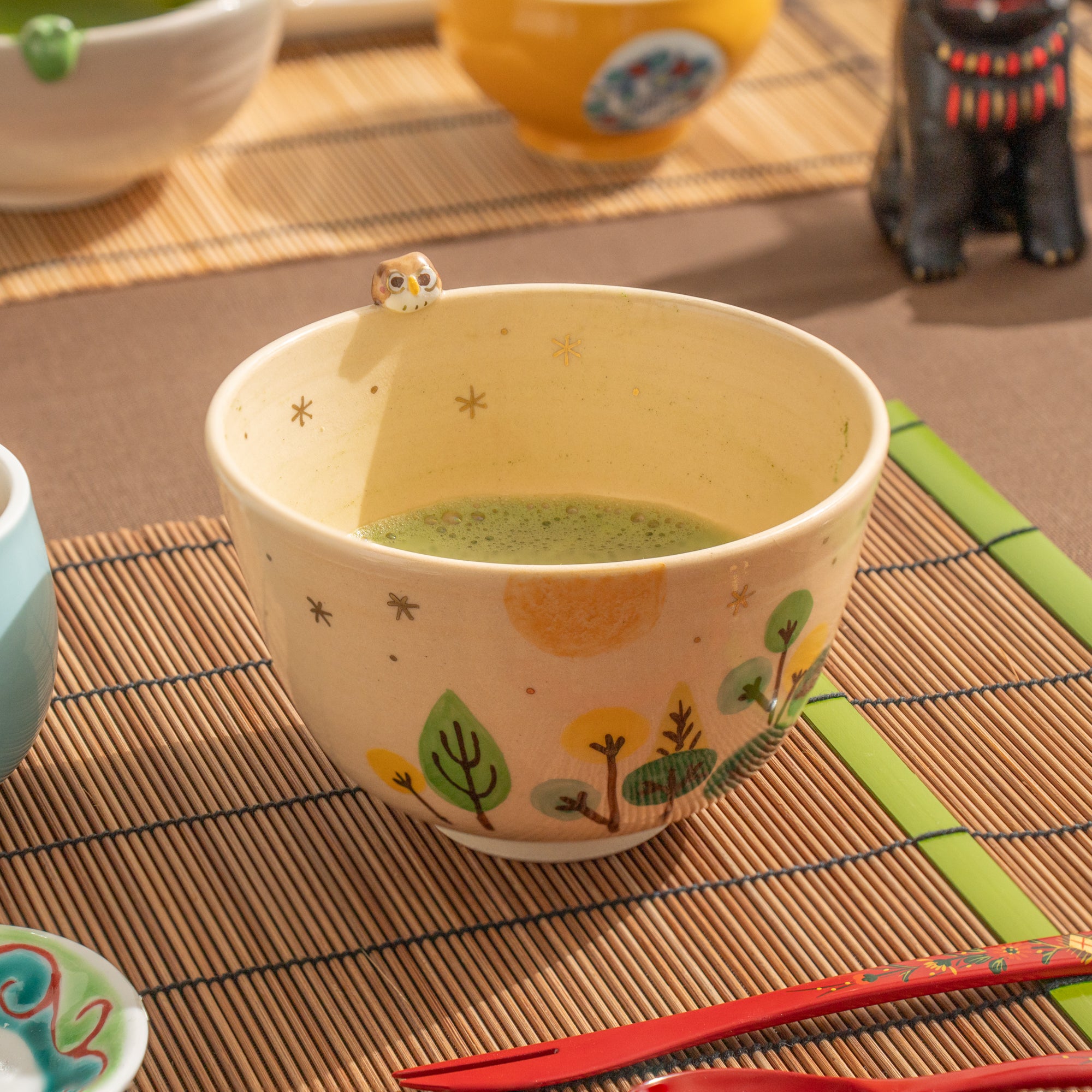
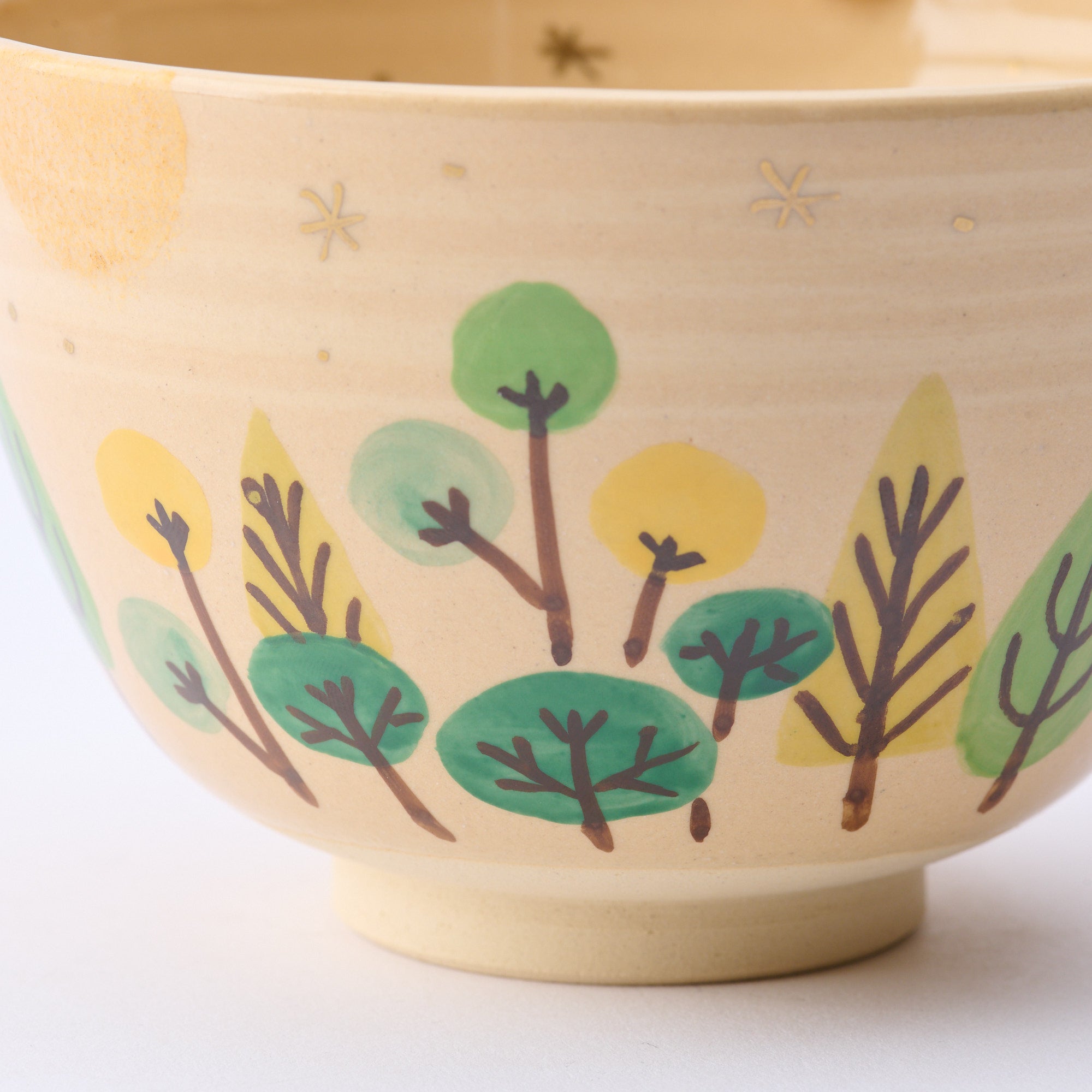



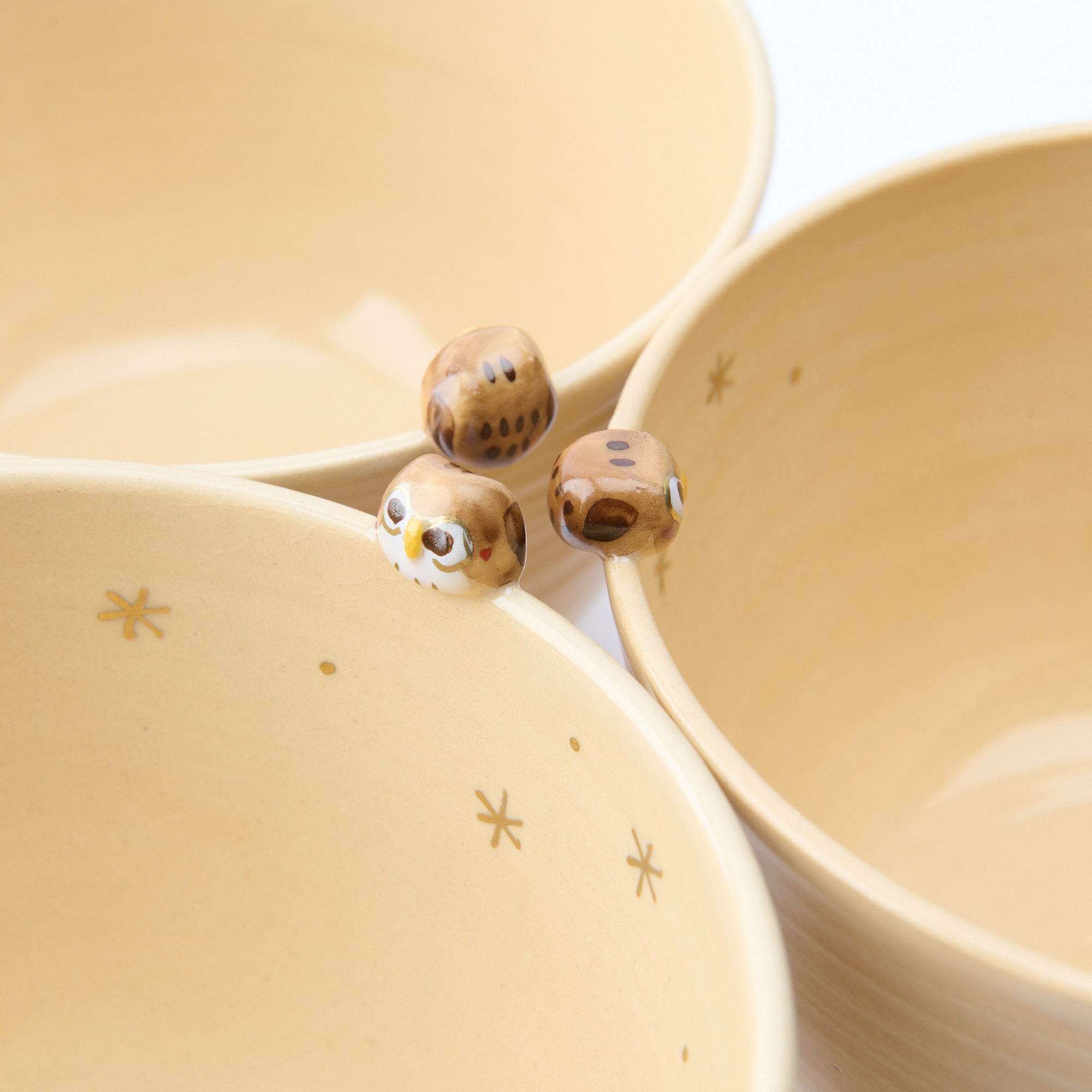



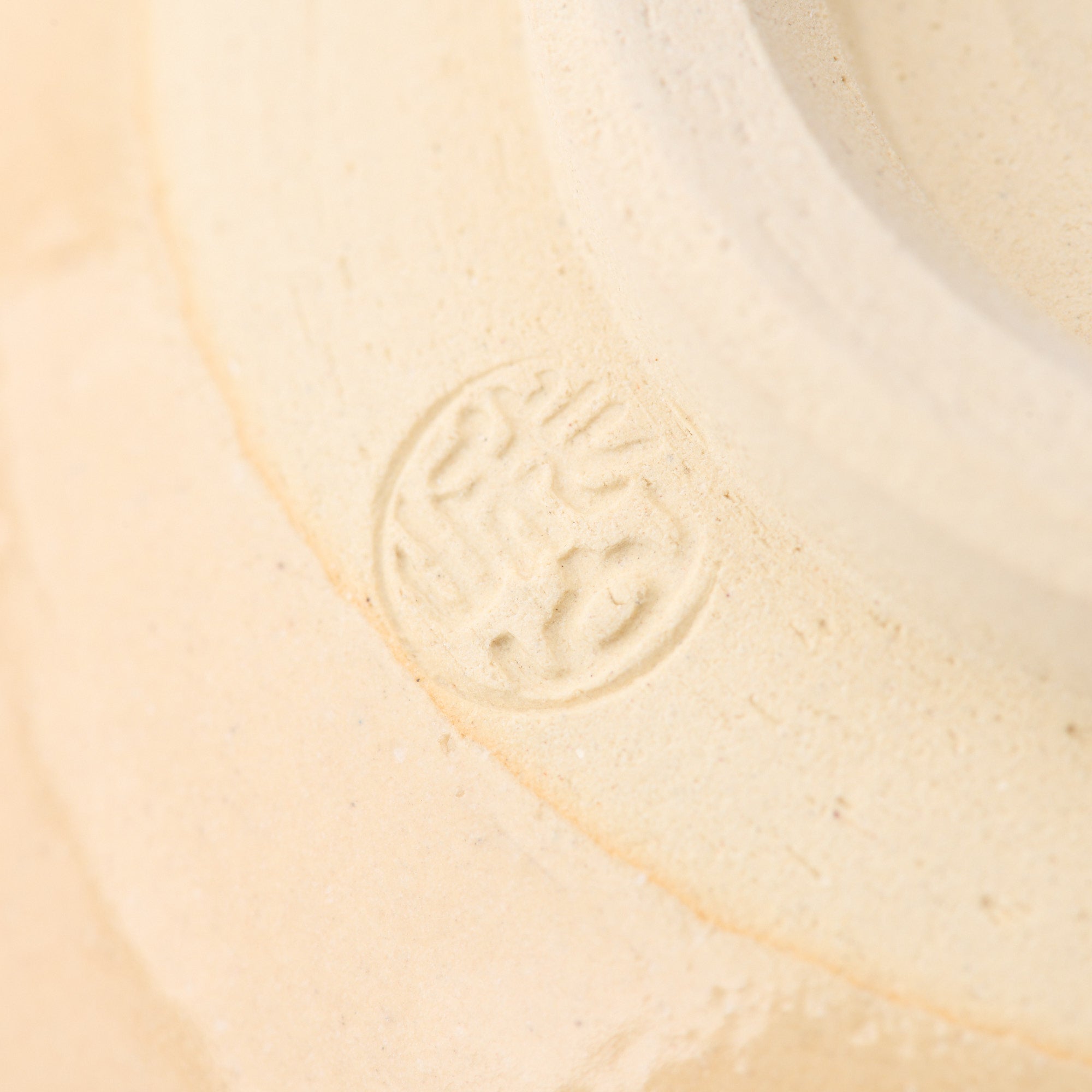
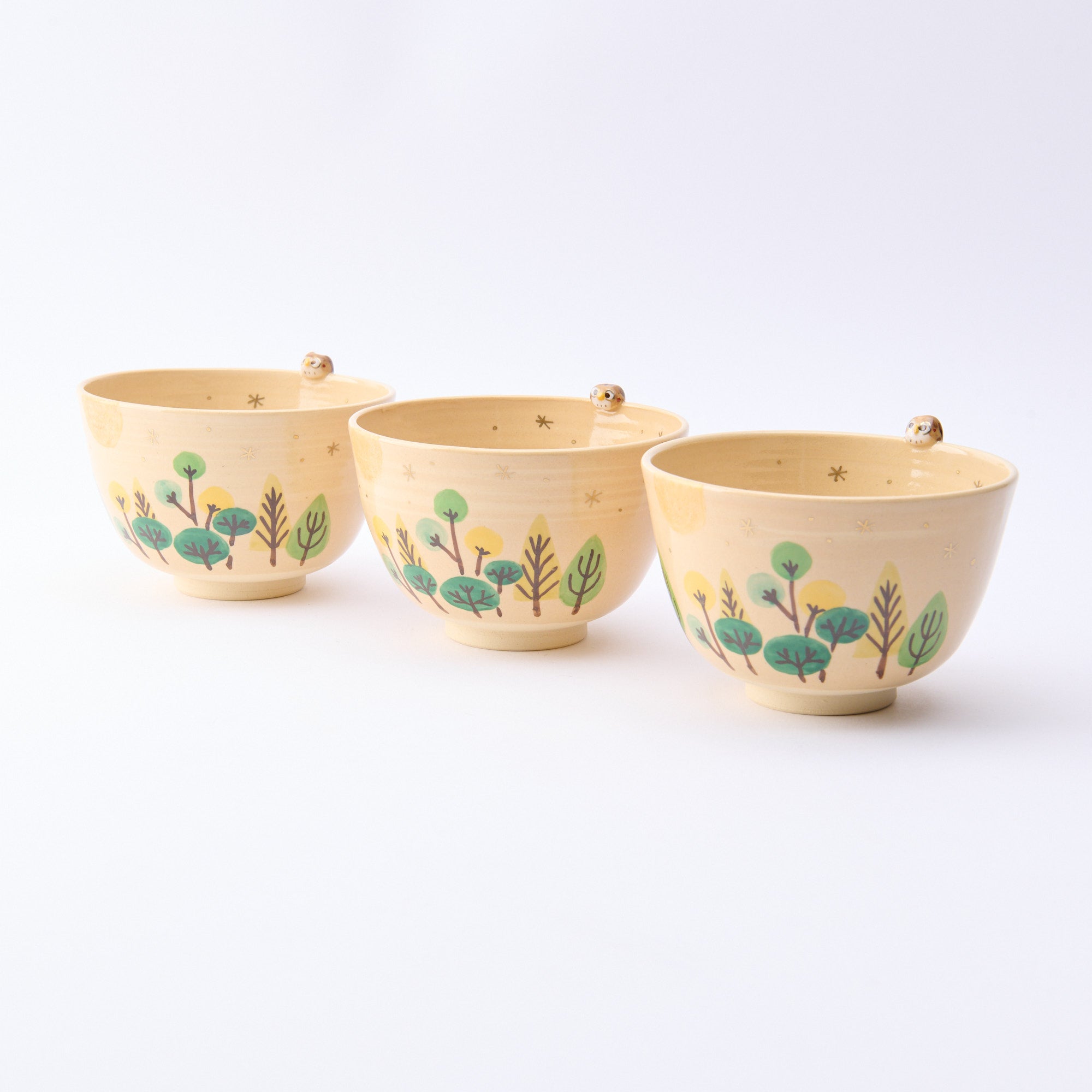

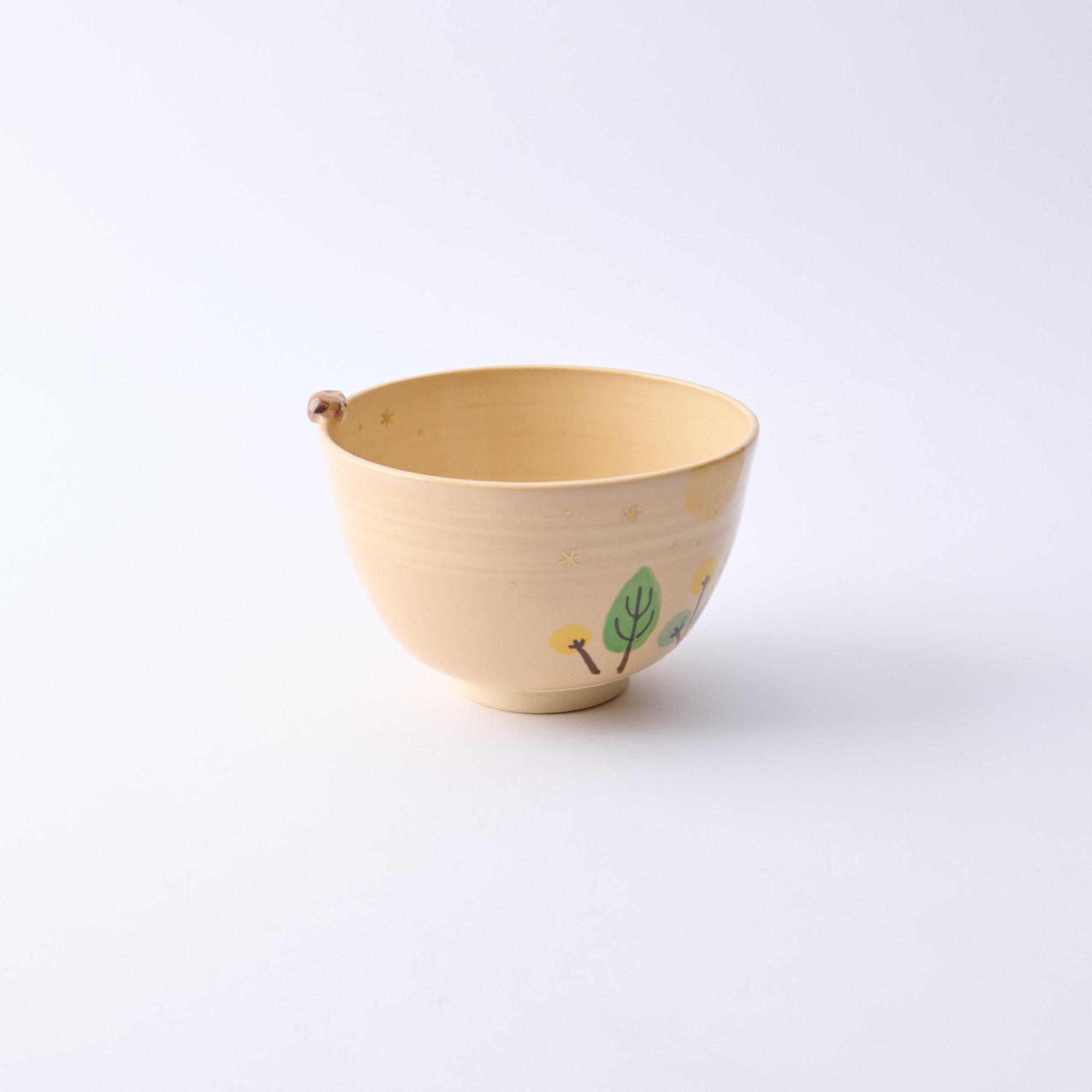
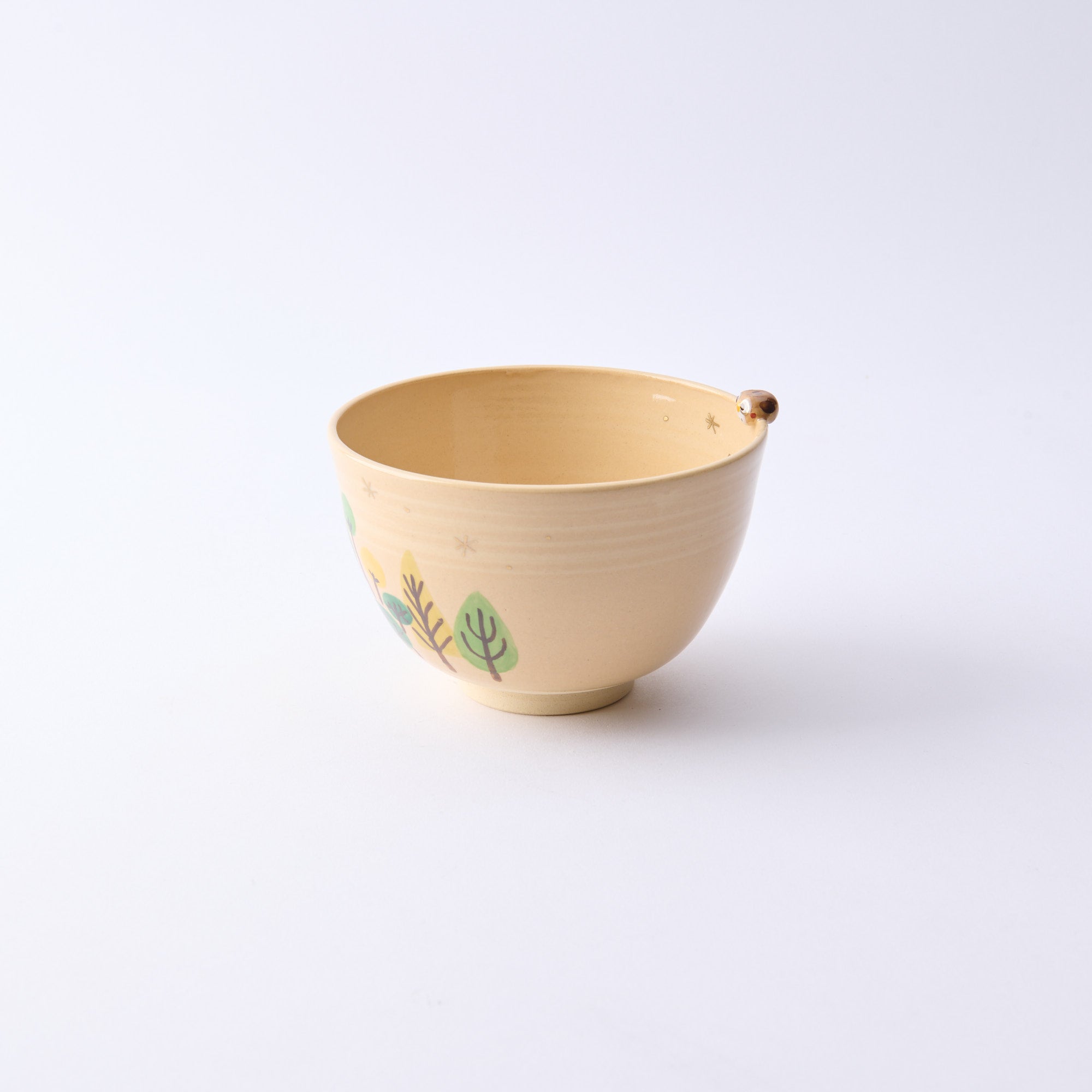
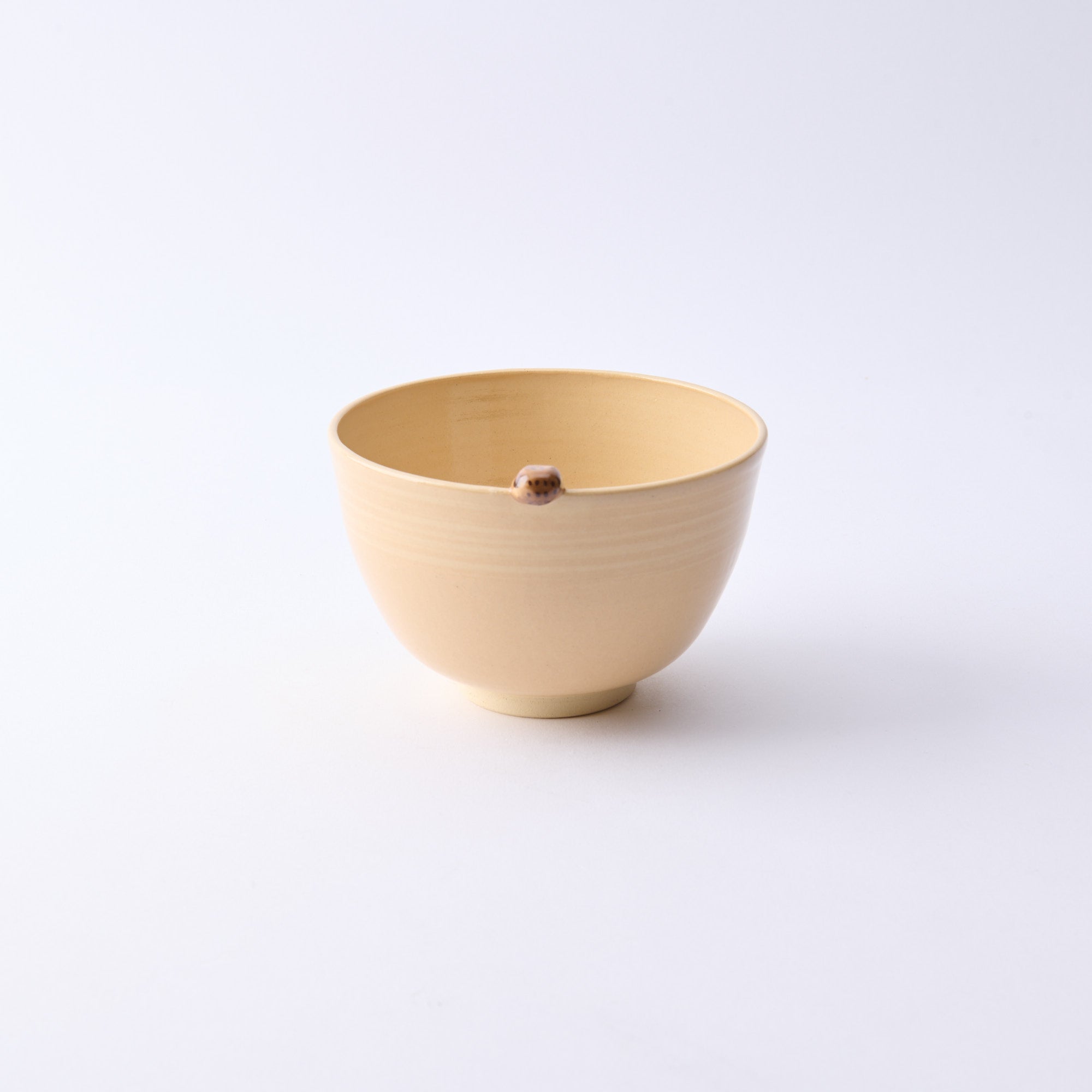
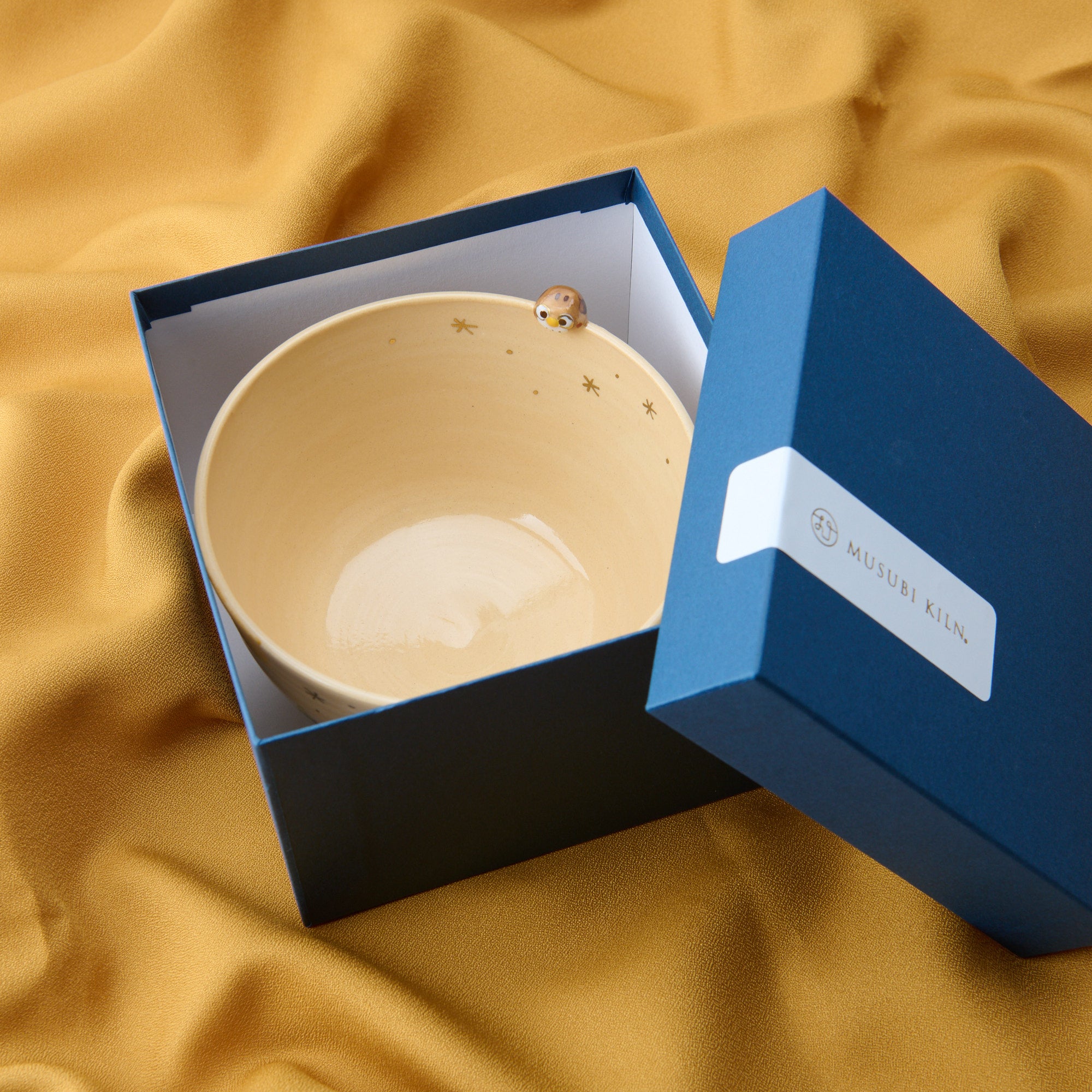
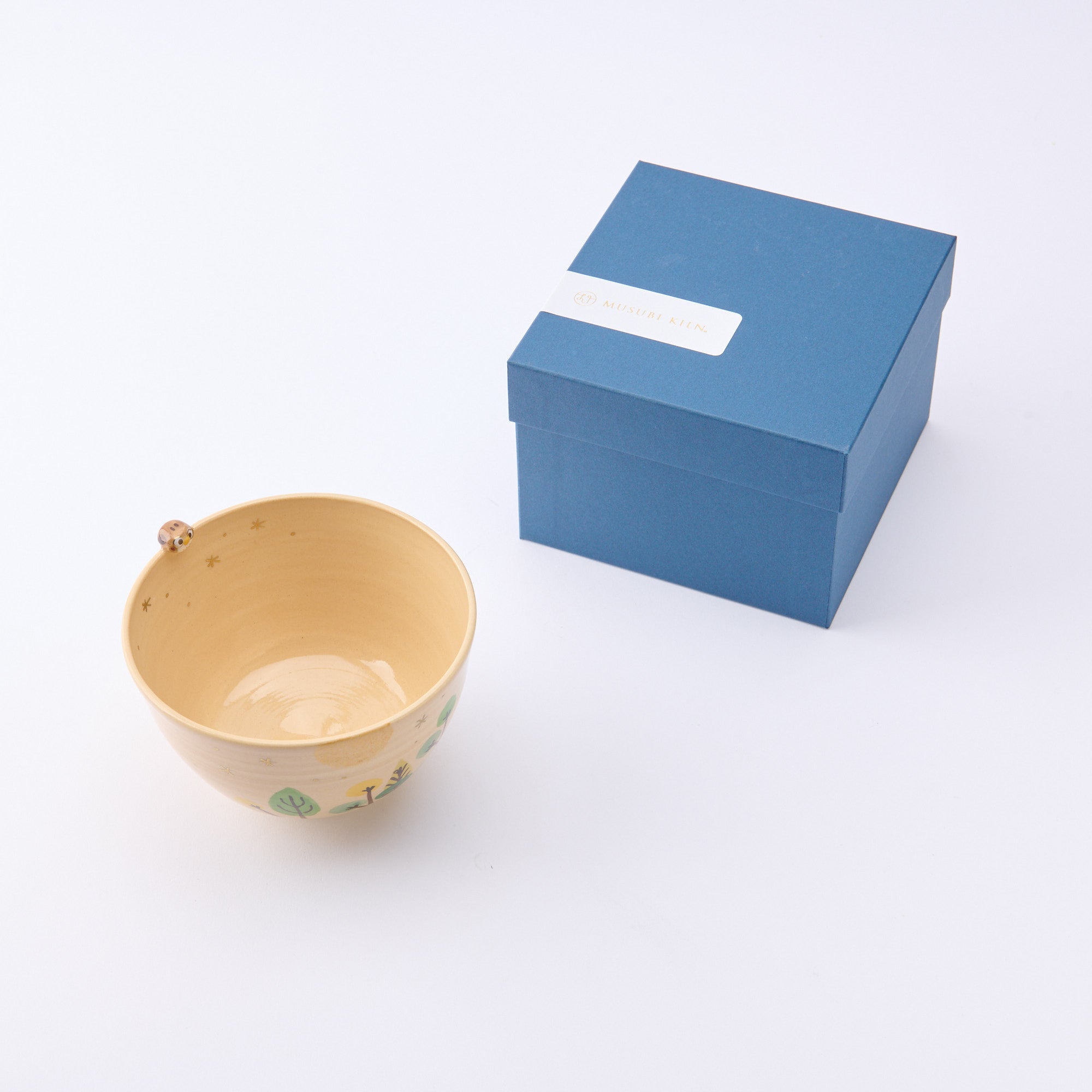
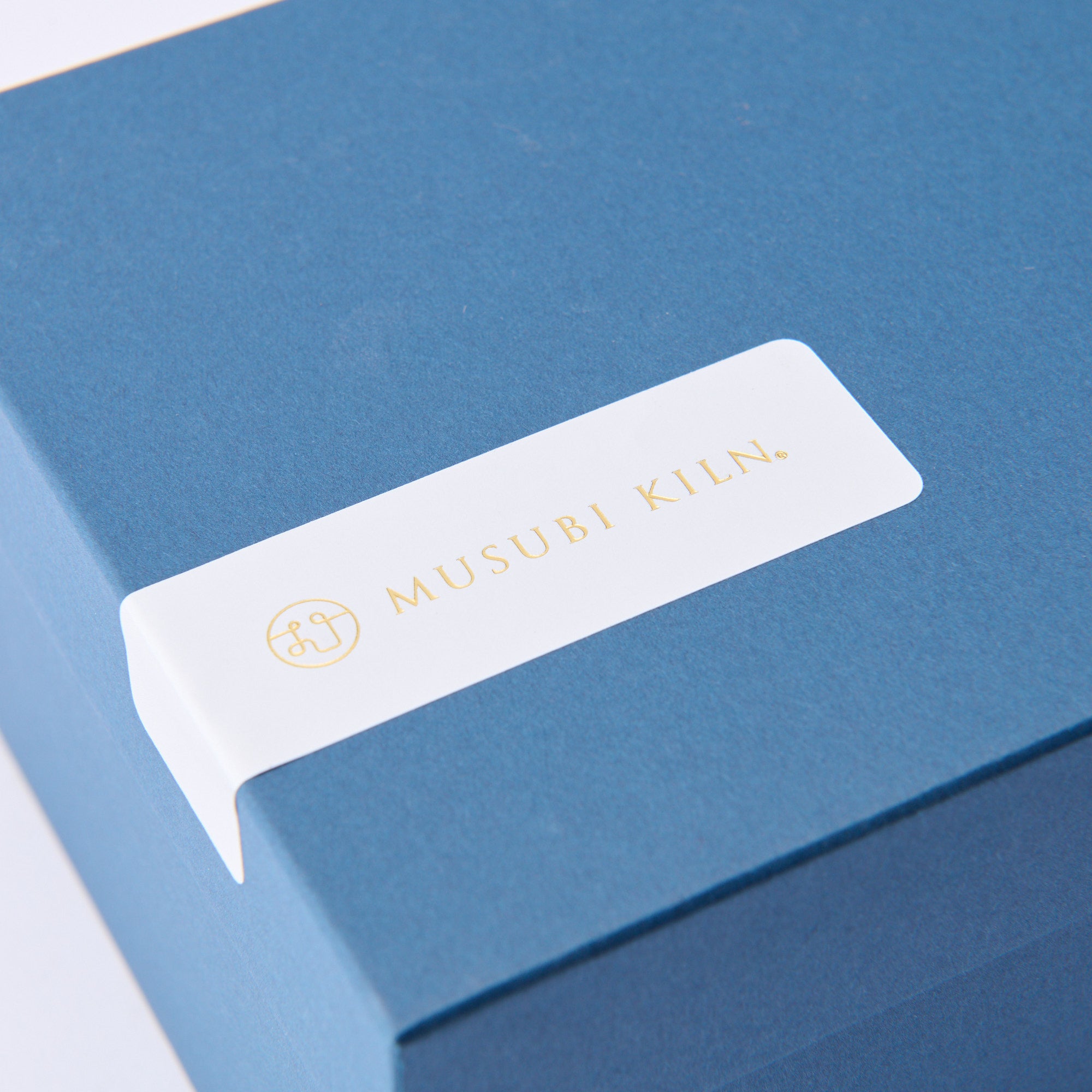
Matcha-Schale mit Wald- und spähender Eule
Estimated Shipping Widget will be displayed here!
Diese Matcha-Schale vereint das beliebte Eulenmotiv mit skurrilen Waldtieren für einen unwiderstehlich charmanten Effekt. Exklusiv entworfen für Musubi KilnEs ist in sanften, natürlichen Farbtönen handbemalt und das Design zelebriert die Ruhe des Waldes. Eine dreidimensionale Eule auf dem Rand scheint bereit, den lebendigen Matcha im Inneren zu probieren und verleiht Ihrem Teeritual eine herrlich verspielte Note.
Das Eulenmotiv ist nicht nur bezaubernd rund, es hat auch eine tiefe kulturelle Bedeutung, da Eulen in Japan als Symbole für Glück und Freude verehrt werden.
Mit ihren fröhlichen und liebenswerten Motiven eignet sich diese Teeschale perfekt für die Zubereitung von Matcha. Ein wunderbares Geschenk für alle, die sich für die Tradition der japanischen Teezeremonie interessieren oder chado, seine Größe ist ideal, um ihn mit beiden Händen zu halten, sodass die sanfte Wärme des Matcha allmählich durch die Schale in Ihre Handflächen sickern kann.
EINZELHEITEN
| Quantity | 1 |
| Size | D 12.0 cm (4.7 in) x H 8.0 cm (3.1 in) |
| Capacity | 350 ml (11.8 fl oz) |
| Weight | 200 g (7.1 oz) |
| Material | Stoneware |
| Package Type | Paper box |
| Microwave | No |
| Dishwasher | No |
Hersteller / Marke
Am Fuße des Fushimi Inari Taisha-Schreins in Kyoto befindet sich Tanaka Toubou, die Brennerei der Kunsthandwerker Tanaka Nobuo und Tanaka Michiko. Sie sind seit 35 Jahren in Betrieb und haben sich auf die Herstellung einzigartiger Utensilien für die Teezeremonie und des täglichen Gebrauchsgeschirrs spezialisiert.
Nobuo kreiert hauptsächlich glasierte Ware mit einem schwarzen tenmoku Glasur, die mindestens fünf Prozent Eisen enthält. Michikos Arbeiten fangen die Essenz jeder Jahreszeit zusammen mit sanften Darstellungen von Pflanzen und Tieren ein und schaffen so eine emotionale Verbindung zu ihren Bewunderern.
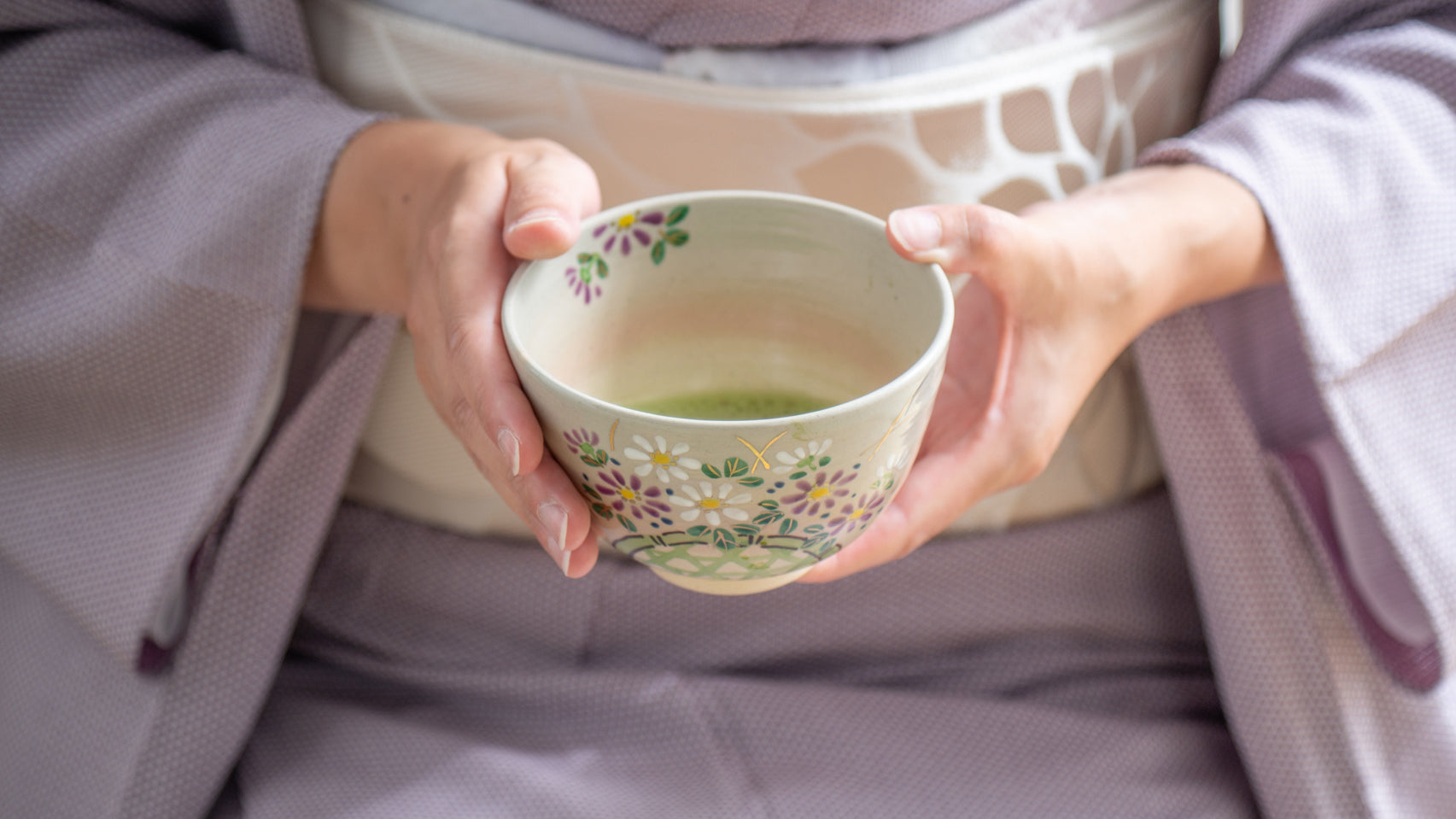
Kunsthandwerk
Kyo- und Kiyomizu-Ware, zusammen als Kyo-yaki und Kiyomizu-yaki bekannt, sind berühmte Keramikstile aus Kyoto. Bekannt für ihr lebendiges Design, ihre fein geformten Formen und die Liebe zum handwerklichen Detail, spiegeln diese Waren Kyotos unverwechselbaren Sinn für Schönheit und künstlerische Raffinesse wider.
Kyo- und Kiyomizu-Ware zeichnen sich durch eine lange gepflegte Vielfalt aus und greifen auf Techniken und Stile der Töpfertraditionen Japans zurück. So entwickelte sich eine ausdrucksstarke und typisch Kyoto-Kunstform. 1977 als traditionelles japanisches Kunsthandwerk anerkannt, werden sie bis heute wegen ihrer kulturellen Tiefe und Alltagstauglichkeit geschätzt.

Anmerkungen
Optionen auswählen





















Estimated Shipping Widget will be displayed here!
Matcha Schüsseln
Nehmen Sie sich einen Moment Zeit zum Entspannen und genießen Sie Matcha zu Hause mit einem authentischen und wunderschön zubereiteten Matcha chawan.
Entdecken Sie unsere Kollektion handgefertigter japanischer Matcha-Schalen, die alle von erfahrenen Kunsthandwerkern hergestellt wurden, und finden Sie die perfekte Schale für Ihr Tee-Erlebnis.
